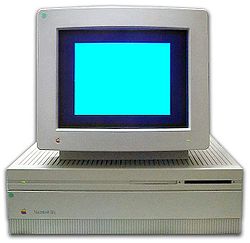>...
>...
microprocessor is in relation to all matters to do with the CD 1604 is a single chip. It is their birth when researchers at the Intel integrated all the processing functions of arithmetic, logic and control together in one chip through photolithography process.
CPU read the data and instructions given to you as an 8-bit bytes kod.Čitanje involved performing arithmetic and logic calculations on kod.Dobivenih data and user management functions still allowed in the order of code in a variety of data streams that are written or received as graphical output to the monitor.
integrated chip microprocessor has become known as the central processing unit - CPU - or "brains" of computers. Its entrance is heightened 1958-1959 before the invention of the integrated circuit chip Jack Kilby at Texas Instruments and Robert Noyce, then at Fairchild Semiconductor. These two independent engineers has created a small transistor and IC chip as solid-state piece of silicon (or germanium). Their discovery has led to important new era of solid-state electronics.
Kilby won the Nobel Prize for the IC chip, and Noyce continued his development as a founder of Intel Corporation. Meanwhile, solid-state miniaturization of electronic components immediately push the boundaries of new technology advances in space, defense and consumer projects. By the 1970s, large-scale integration (LSI) of tens of thousands of transistors on a chip will eventually lead to very-large scale integration (VLSI) with millions and then billions of transistors per chip after the turn of the century.
Under Noyce, Intel released the first microprocessor CPU status, 4004, 15 November 1971.Tvrtka has also developed the first random memory chip, RAM chip, to provide temporary storage for CPU.4004 could process 60,000 (60K) for use in seconds. Only Intel produces 8-bit microprocessor 8080, April 1974, the desktop revolution really started to bloom.
8080 had about 6,000 transistors smaller than photolithography on a microprocessor chip. This is the clock speed of 2 MHz, which could process hundreds of thousands of instructions per second.
Soon, hobbyists are ordering gloves Altair 8800, bare-knuckles computer with a microprocessor 8080, after being advertised on the cover of Popular Electronics.Tumač 1975 units of BASIC programming language for hoisting and instruct the computer was designed by Bill Gates and Paul Allen.
In 1976, Steve Wozniak and Steve Jobs founded Apple Computer, Inc. initiated the first experiments with computer models. They used a Z80 microprocessor as a CPU. The two founders began to mass produce their Apple II microcomputer in 1977.
Xerox, Inc., is an important experimenter in the early desktop technology. By the mid-1970s, Xerox has put together a desktop version of the minicomputer system called Alto, at their Palo Alto Research Center. Xerox has done much research into the use of graphics. All early desktop models used command-line control, where users type in a series of instructions at the command prompt. Early desktop producers such as Steve Jobs visited Xerox PARC and the received idea of the graphic user interface and mouse.
Other third-generation computers are turning performance on IBM PC and its operating system from Microsoft, a 1984 introduction of the Apple Macintosh. IBM released the first version of its IBM PC August 1981. By 1982, there have been shipping with MS-DOS as the operating system. The next pre-model IBM PC / AT was published in August 1984, based on Intel 16-bit CPU 80 286, with 134 000 transistors. The CPU could reach a speed of 8MHz. Many clones have been produced based on the IBM-PC models, especially from charged.
with a special flair, during Super Bowl XVIII commercial, 22 January, 1984, Apple released the Macintosh computer. Setting up a sign Apple, Macintosh has become known for its interesting graphic mogućnosti.Sustav with 16-bit Motorola 68k processor, any proprietary and can not be cloned.








0 komentar:
Posting Komentar